A Crazy List of WooCommerce Statistics You Can’t Ignore

WooCommerce is a free, open-source ecommerce plugin for WordPress that allows e-tailers to easily create and manage an online store on their WordPress website. It’s a popular choice for small to mid-sized online businesses because it’s user-friendly, customizable, and offers a wide range of features. And because WooCommerce is built on the WordPress platform, it’s easy to integrate with other tools and plugins, such as payment gateways, shipping software and marketing automation tools.
As a cost-effective and flexible option, WooCommerce has always been a major player in the ecommerce space. But no matter how many shiny and new platforms enter the market, it remains a leader. Take a look at this crazy list of WooCommerce statistics to see just how much of the market it powers.
A Quick WooCommerce Primer
Before we dig into the statistics of the WooCommerce powerhouse, let’s go back to 2003 when developers Matt Mullenweg and Mike Little created a spinoff project from a different personal blogging system. Dubbed WordPress by a friend, the pair launched Version 1.0 in 2004 and continued building from there.
Phase two of the WordPress brand included an ecosystem of plugins featuring the ecommerce-enabled WooThemes that was introduced in 2008. After a rebrand, WooThemes became WooCommerce and starting in 2017 focused solely on online retail. WooCommerce then reached one million downloads only two years after its release. And today, it’s the leading ecommerce platform worldwide.
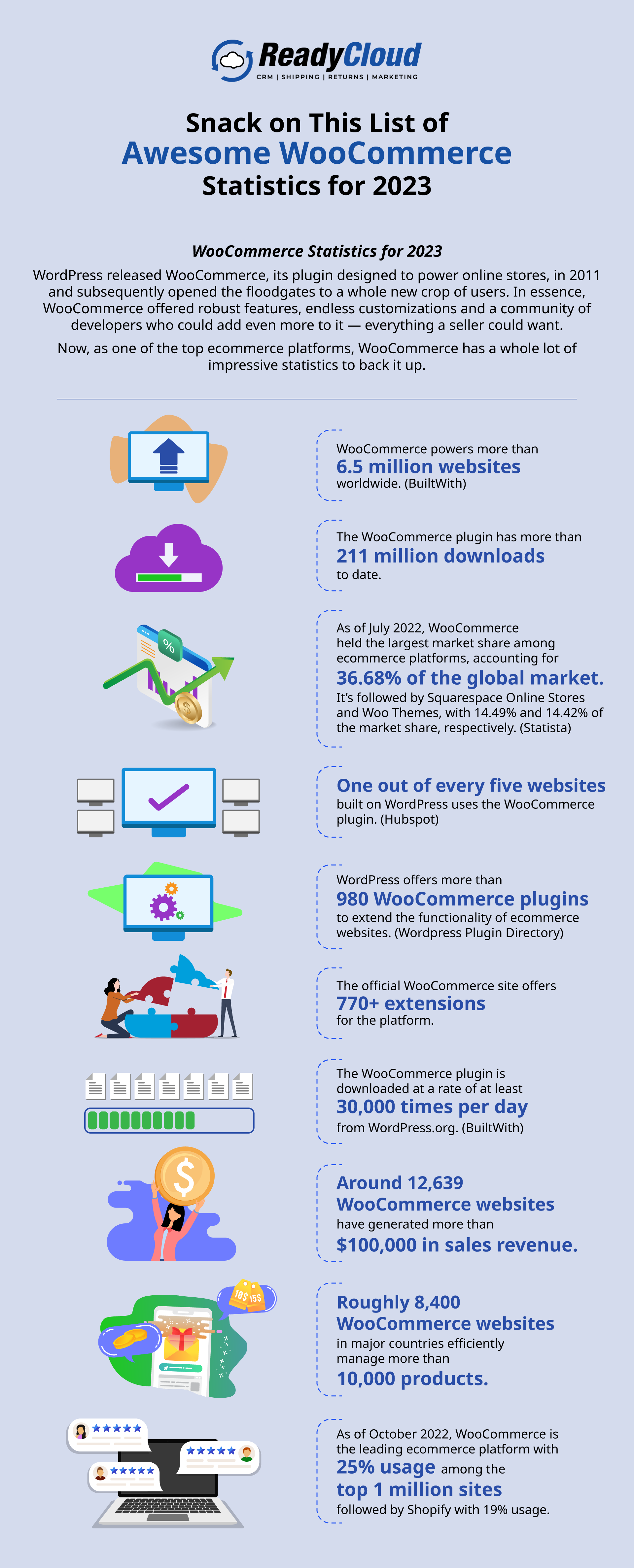
WooCommerce at a Glance
- WooCommerce is rapidly approaching 200 million downloads after launching in 2008.
- WordPress is currently translated into 63 languages.
- 22% of the top ecommerce sites use WooCommerce.
- GitHub lists 1,055 contributors to the current version of WooCommerce.
- The WooCommerce plugin is downloaded at least 30,000 times daily, per WordPress.
- Automattic acquired WooCommerce in 2015 for a rumored $30 million.
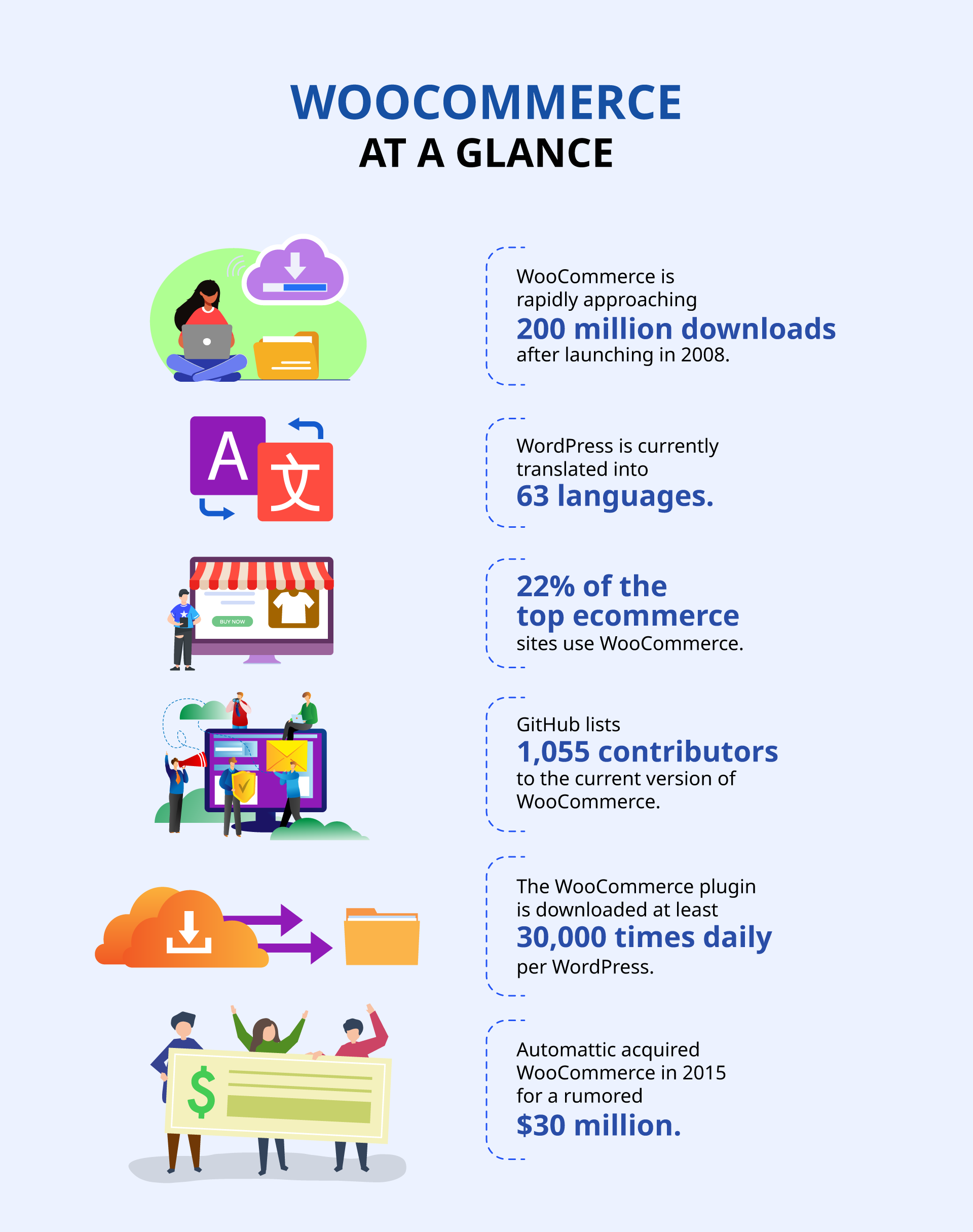
WooCommerce Usage Statistics
Let’s start with WooCommerce users, who span the globe across millions of online stores. According to BuiltWith trends:
- 7.1 million live websites use WooCommerce.
- 6.3 million websites have used WooCommerce in the past.
- 727,654 sites in the US are using WooCommerce in 2023.
- The countries with the most WooCommerce users are as follows: US, UK, Germany, Italy, Brazil, and France.
- 20% of websites that use WordPress also use WooCommerce.
- A mere 8,400 WooCommerce stores process 10,000 unique products globally.
- WooCommerce powers 4.6% of the top one million websites.
Perhaps it comes as no surprise to learn that Statista named WooCommerce the leading ecommerce platform in 2022 with 36% of the market share worldwide. What’s more, its related tool Woo Themes (which specializes in website design) ranked third with 14% of the market share. In second place: Squarespace, another popular site design tool.
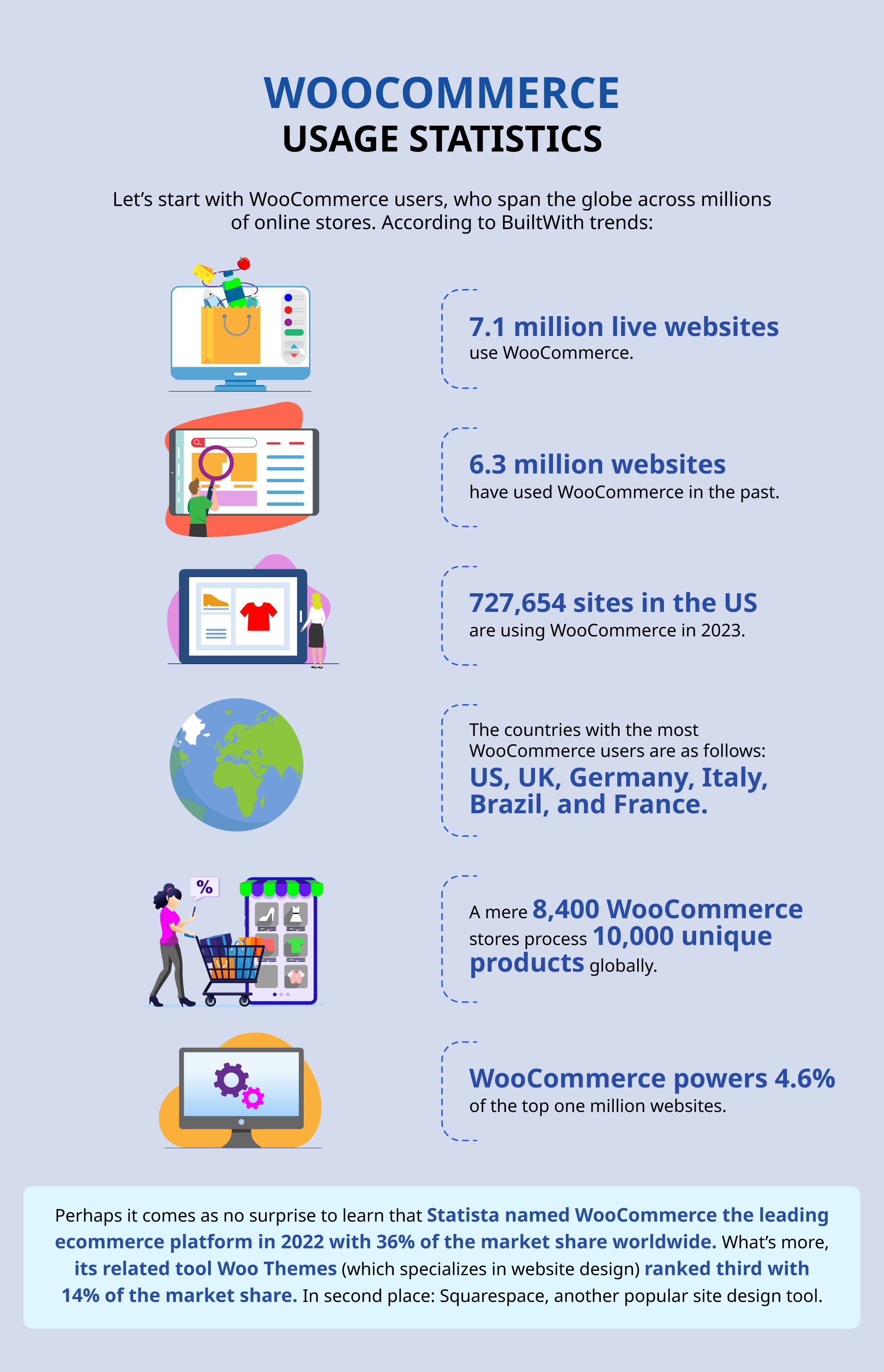
WooCommerce Plugins Statistics
Although WooCommerce is totally customizable and comes stock with plenty of features, the real power is in its integration capabilities. Whether you’re looking to process multiple currencies, offer seamless returns or recover abandoned carts, there’s a plugin that can handle your needs.
- WooCommerce offers a library of 5000+ cloud apps and services from vendors who are their official partners.
- There are roughly 55,000 plugins total, offered by both WordPress sites and third party developers.
- WordPress plugins have received more than one billion downloads to date.
- The WooCommerce team handpicks 10 “essential” plugins for sellers to accept payments, customize product offerings, run ads and more.
- Only 30 plugins added to the library in the last three years have more than 100,000 downloads.
- 57% of plugins have yet to be rated.
- 3% of plugins have never been updated since publication to the library.
Finding the right WooCommerce plugins is similar to online shopping itself — it requires a bit of due diligence. Look for ratings and reviews, and be sure to evaluate all options before forking over any of your hard earned cash.Want to be sure you’re downloading the best tools? Pro tip: Don’t miss our guide to the must-have WooCommerce plugins for online retailers.
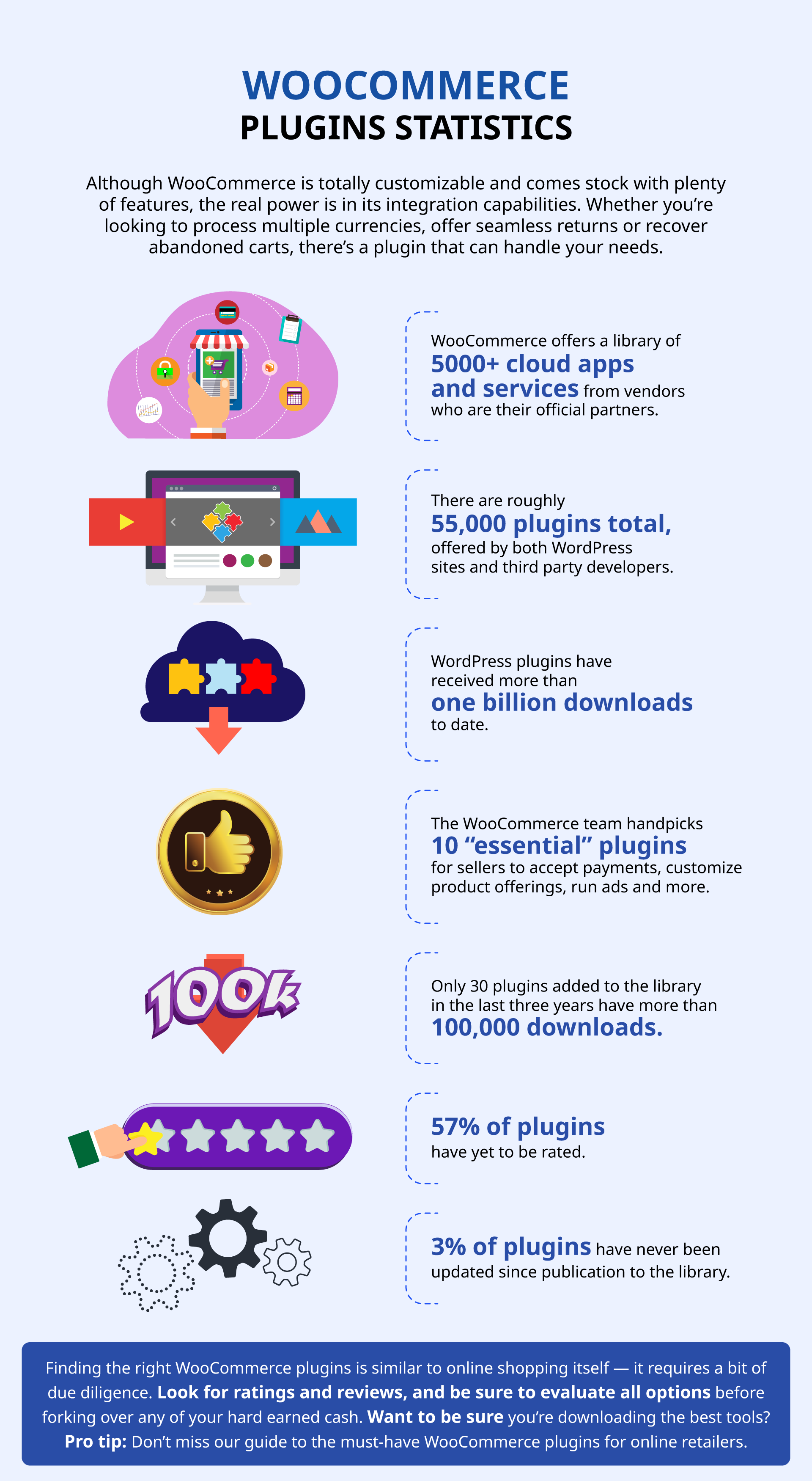
WooCommerce Sales Statistics
With so many capabilities between WooCommerce and its vast array of plugins, it’s no wonder why sellers using the shopping cart are seeing immense success in ecommerce.
- Matt Mullenweg, co-founder of WordPress, said in 2020 that “WooCommerce facilitated over $20 billion in sales so far this year. More than double the year before.”
- The combined revenue of all the WooCommerce stores is greater than 35% of the world’s countries.
- In 2019, WooCommerce stores had a GMV of over $11.8 billion, up from $10 billion in 2018.
- More than 12,000 WooCommerce-powered stores see $100,000 in annual sales revenue.
It’s clear that WooCommerce can power some serious sales. Be sure to implement these tips if you want to get in on the action.
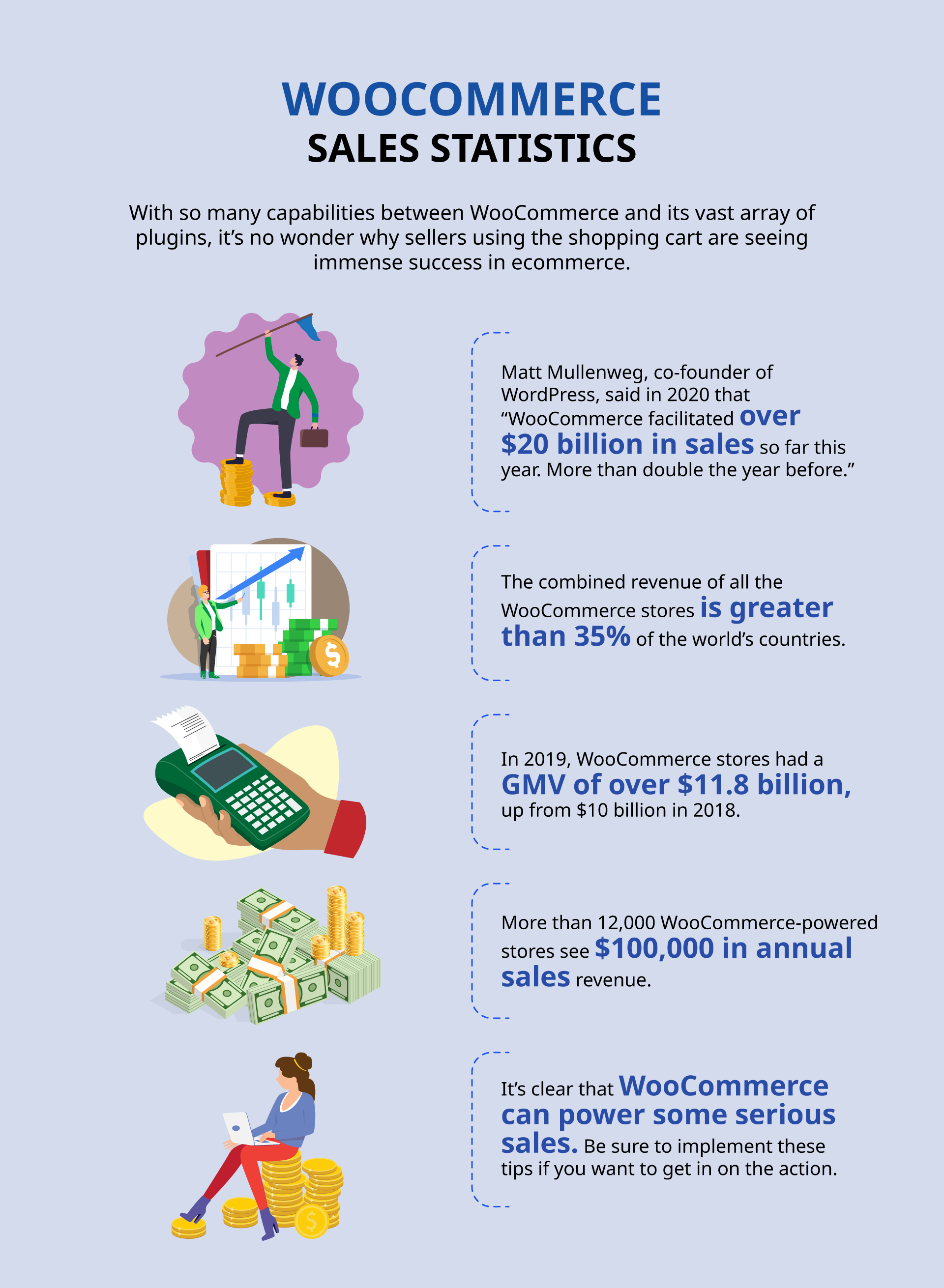
Woo for the Win!
Whether you’re launching your ecommerce business or you’re expanding your online presence, WooCommerce is a great option used by millions of retailers to find and sell to customers. Online retailers may choose to use this shopping cart for several reasons:
- It’s free: WooCommerce is an open-source plugin that can be downloaded for free, making it an attractive option for businesses with a limited budget.
- Integrates with WordPress: WooCommerce seamlessly integrates with WordPress, which is a widely used and popular platform for creating websites.
- Customizable: With a large number of themes and plugins available, WooCommerce can be easily customized to meet the specific needs of an online retailer.
- Supports multiple payment methods: WooCommerce supports a wide range of payment options, including major credit cards, PayPal, and bank transfers.
- Provides detailed reporting: WooCommerce provides detailed reporting on sales, customer activity, and shipping, allowing businesses to make informed decisions.
- Secure: WooCommerce uses secure protocols to protect customer data, helping businesses maintain the trust of their customers.
- User-friendly: WooCommerce has a simple, intuitive interface that makes it easy for retailers to manage their online store, even if they don’t have technical expertise.
And after seeing these statistics, you can be sure this winning platform has staying power.
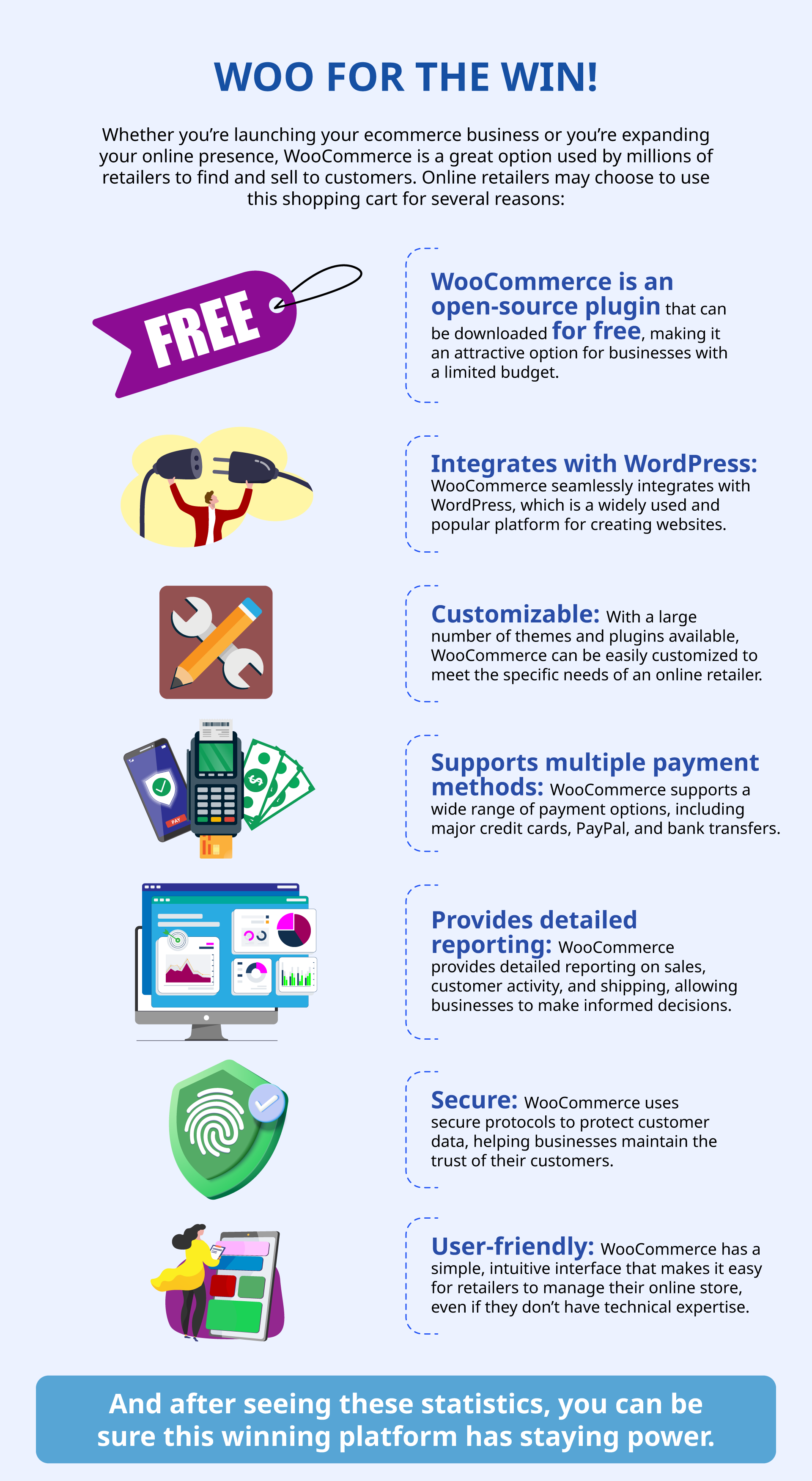
WooCommerce Sellers Ready to Streamline Should Take a Look at ReadyCloud
Running a growing WooCommerce store can quickly become overwhelming if you’re piecing together shipping tools, CRMs, and return systems. ReadyCloud brings it all into one place, built specifically for sellers who want to save time, stay organized, and keep customers happy. If you’re spending more time managing your software than managing your business, it’s time for a change. See how the ReadyCloud CRM Bundle simplifies WooCommerce.
Share On:








